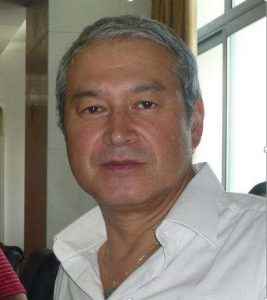An article published in Frontiers in Physiology tends to show that populations living above 2500 meters are less prone to Covid-19. Adaptation to oxygen deprivation would reduce SARS-CoV-2 infection through a complex mechanism involving the renin-angiotensin system that Jean-Marc Sabatier has often described here.
This is a very technical article by Christian Devaux and Didier Raoult published on August 25, 2022 in the scientific journal Frontiers in Physiology. The two famous professors note that an epidemiological report carried out among populations living on the Andean Altiplano in South America (Peru and Bolivia), on the Tibetan plateaus in Asia and on the Ethiopian high plateaus in Africa, thus above 2500 meters of altitude, were less concerned about the SARS-CoV-2 infection. The hypothesis put forward would be an adaptation to hypoxia, the lack of oxygen supply to the body’s tissues. It remains to be understood what the mechanisms are.
The RAS hormonal system
The two authors of the article establish the direct link between hypoxia and the over-activation of the AT1R receptor of the renin-angiotensin system (RAS). This ubiquitous hormonal system in the body controls all organs and tissues in our body.
In this paper, hypoxia would reduce the ability of SARS-CoV-2 to bind and enter target cells, conversely activation of HIF-1α (the hypoxia-induced factor) could reduce antiviral immune defenses and exacerbate pro-inflammatory responses and thrombosis that are detrimental to SARS-CoV-2 infected individuals.
Now, Covid-19 caused by SARS-CoV-2 that emerged in China in November 2019 is primarily characterized by acute respiratory distress, a storm of pro-inflammatory cytokines, and thrombotic events leading to multiple vital organ dysfunctions that can lead to death.
“At 4,000 m altitude, each breath of air contains only 60% of the oxygen molecules present in the same breath at sea level. Adaptation to hypoxia occurs through ventilation, which controls the volume of air and oxygen delivered to the pulmonary alveoli and leads to a higher concentration of erythrocyte (red blood cell) hemoglobin in the bloodstream that picks up oxygen exchanged through the alveolar-capillary system.”
Thus the renin-angiotensin system (RAS) pathway in high-altitude populations and its imbalance in coronavirus disease seems once again confirmed.
The target of the virus
For two and a half years now, Jean-Marc Sabatier* has been asserting that Covid-19 diseases are due to an over-activation of the AT1R receiver of the RAS. This over-activation is due to an excess of angiotensin 2, insufficiently degraded by the ACE2 receptor which is the target of the virus.
According to Jean-Marc Sabatier, in disagreement with what is described in the Frontiers in Physiology article, it is the over-activated AT1R receptor that is directly responsible for hypoxia (hypoxic stress), in addition to its other deleterious activities. The activation of the hypoxia-induced factor is only a response of the organism to hypoxic stress, without any direct link with a reduction of anti-viral immune defenses and exacerbation of pro-inflammatory and pro-thrombotic responses.
It should be remembered that the AT1R receptor has pro-hypertensive, pro-inflammatory, pro-oxidant, pro-angiogenic, pro-fibrosing, pro-thrombotic and pro-hypertrophying activities. While inhibiting the production of nitric oxide (NO) involved in inflammatory, immune and memory phenomena.
*Jean-Marc Sabatier is Director of Research at the CNRS and holds a PhD in Cell Biology and Microbiology and an HDR in Biochemistry. Editor-in-Chief of the international scientific journals: “Coronaviruses” and “Infectious Disorders – Drug Targets”. He is speaking in his own name.
And if the “SRA” explained the Covid-19?
